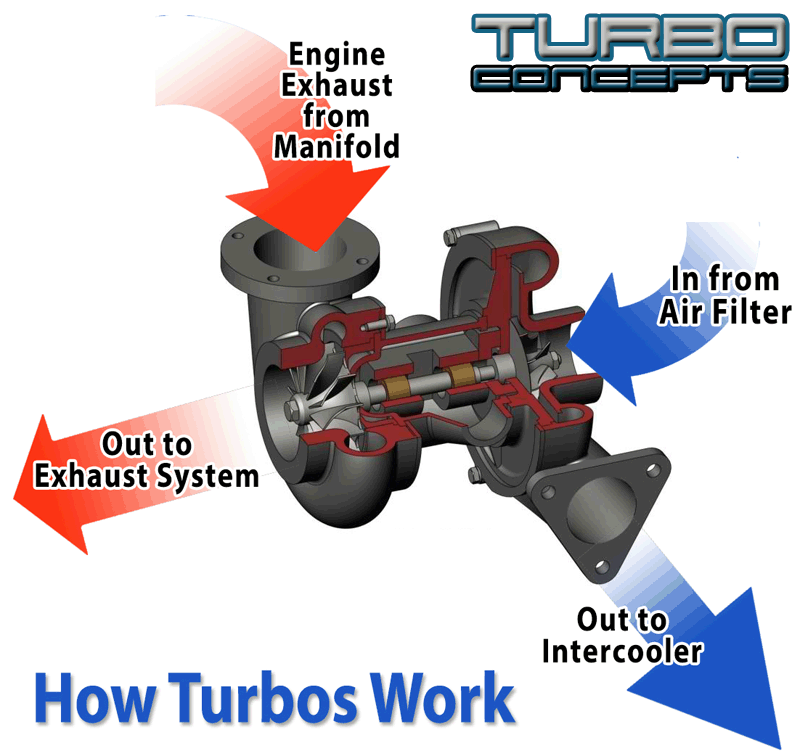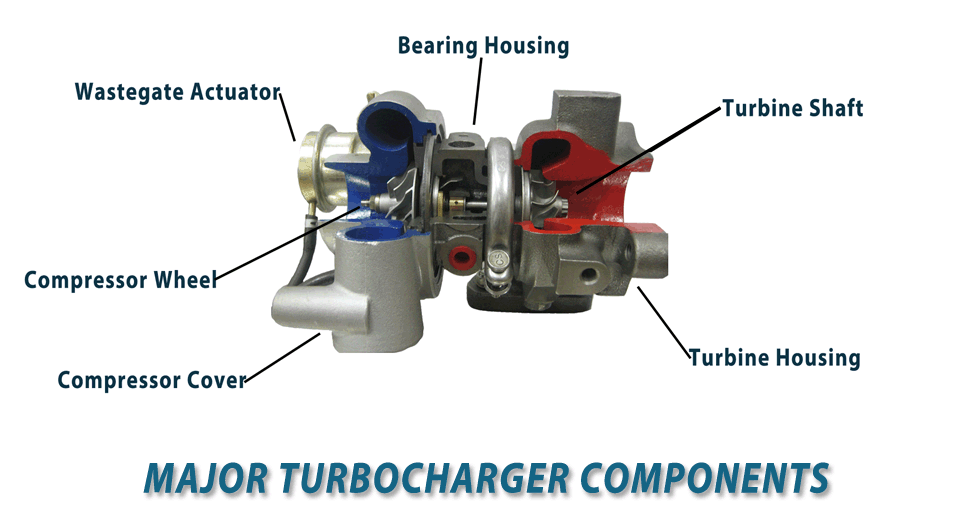How Can We Help?
How Turbos Work
Product Descriptions
Complete Turbochargers
Our complete turbocharger includes the wastegate actuator where applicable, manifold gasket set and exhaust studs. All turbochargers are fully tested to save you time and money.
Cartridge Assembly
The Turbo Concepts cartridge assembly includes all new fasteners and is ready to attach to your housing. Replace the entire unit if the blades have damages the inner housing surfaces.
Rebuild Kit
Includes all the high quality parts needed to rebuild your turbocharger. This includes bearings, seals and all required. All of our parts come with a 12 month warranty. It is not recommended to use this kit with units that have scored shafts, damaged seating surfaces or any evidence of wheel damage.
Gasket Set
Includes inlet and outlet gaskets for the compressor and turbine as well as gaskets for the oil and water inlets and outlets.
Oil Inlet Line
Oil lines should be replaced every 50,000 miles. A new oil line must be purchased with any Turbo Concepts complete turbocharger or catridge assembly to qualify for our warranty. All lines are inspected to insure proper fitment.
Type Key
A/C: Air Cooled Cartridge
Applies to cartridge assemblies with only an oil inlet and oil outlet flange. See Illustration
W/C: Water Cooled Cartridge
Cartridge assemblies which use engine coolant in a jacket surrounding the lubricating passage in order to reduce oil caking. See Illustration
INT: Intercooled
A heat exchanger is used to cool the compressed air discharged from the turbo prior to entering the combustion chamber. With intercooled engines, the turbocharger is often configured differently than the non-intercooled version.
Problem troubleshooting
Lack of Power
- Check that filter, hoses and pipes are clean and in good condition
- Check that the fuel injection system is in good condition and correctly adjusted
- Check that the exhaust system, including catalyst and DPF, is not blocked or damaged
Noisy Performance
- Check that the pipe work and support brackets are not loose or damaged and that the connections are good
- Check for any leakages or cracks in the intercooler
Excessive Smoke or Oil Consumption
- Check that air filters are not restricted or blocked
- Check that engine oil specifications strictly correspond to car manufacturer’s recommendations
- Check that the oil drain pipe is clean and not restricted
- Check for excessive pressure in engine crankcase and correct function of engine breather system
- Check that hoses and joints are in good condition
- Check for lubrication problems in engine block if oil or carbon deposits are found on exhaust manifolds or in the turbine
- Check that the exhaust system, including catalyst and DPF, is not blocked or damaged


